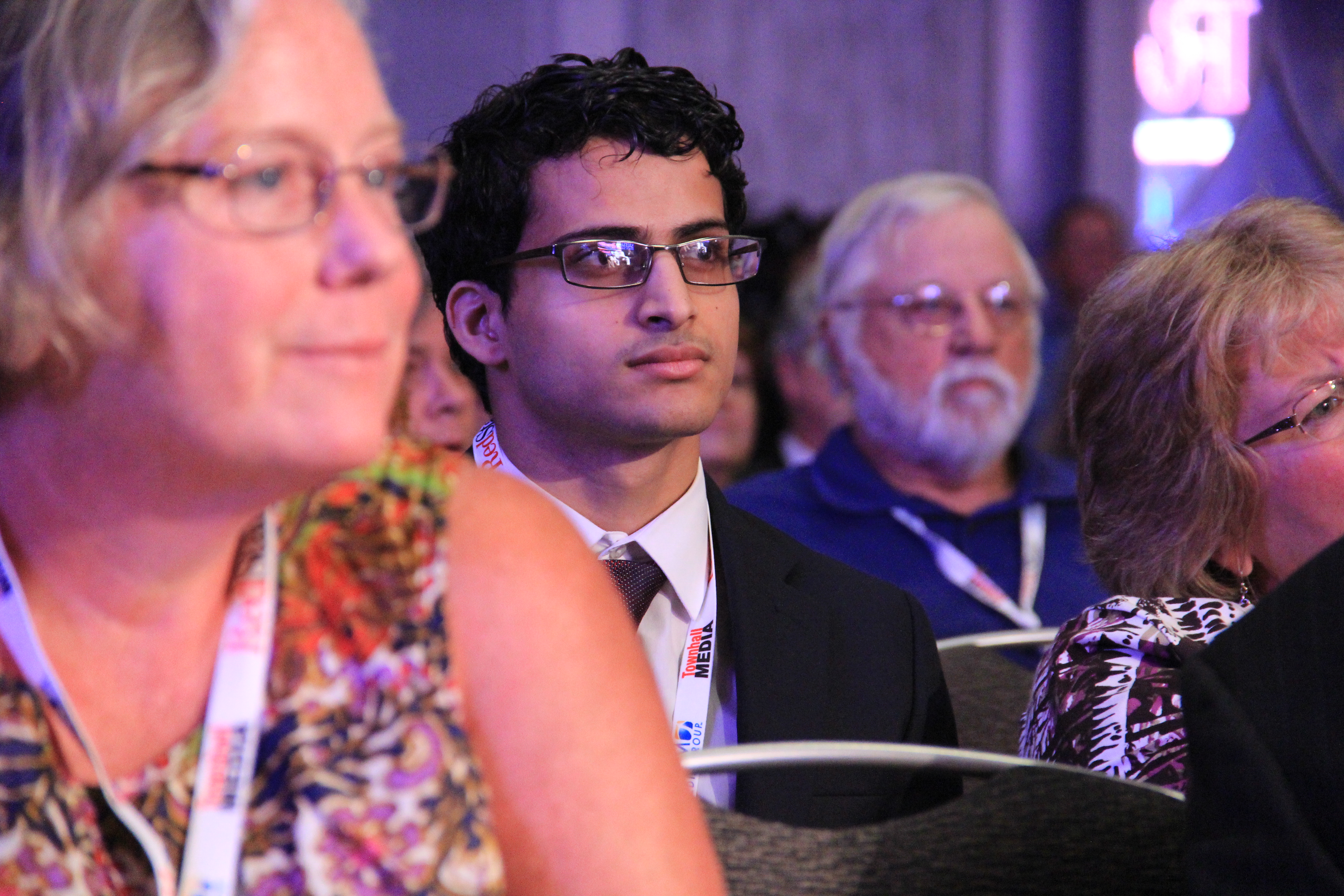ATLANTA — Republican millennials – many of whom began paying taxes, amassing student debt and searching for jobs since the last presidential election – joined more seasoned party members to watch their party’s first primary debate. But it was hard to miss that the younger generation of debate-watchers was dwarfed by a largely gray-haired crowd.
“It is a slightly older crowd, hopefully some more young people come for the weekend,” said Josh Hammer, 26, a law student and supporter of presidential candidate, Sen. Ted Cruz, R-Texas.
The RedState Gathering watch-party, held at the Grand Hyatt Thursday night and attended by several hundred, kicked off a two-day convention where presidential hopefuls will speak to prospective voters in an attempt to woo the party’s right wing. The event, sponsored by the RedState, also features a panel on how the party can attract more younger voters.
Members of the millennial generation are more likely than any other age group to identify as Democrats, according to a Pew Research Center. In 2014, 51 percent of those aged 18 to 34 identified with or leaned toward identifying with the Democratic Party, while 35 percent of millennials said they identified with or leaned towards the GOP.
Jocelyn Kiley, an associate director at the Pew Research Center, said millennials matter, even though younger Americans are less likely to vote in elections than older generations.
“Millennials are aging,” Kiley said. “They will make up a larger proportion of the electorate in 2016, they’ll definitely be an important part.”
Logan Beirne, 31, a professor at Yale Law School who attended the watch party at the RedState Gathering-Thursday, said he thinks the disconnect between millennials and the GOP is on social issues. But he said the aging process will eventually bring socially liberal young people around to more conservative views on fiscal issues, creating a larger bloc of young Republicans.
“We’re to the point where we’re working and we’re paying taxes,” he said. “So I think that’s changing a lot of mindsets.”
Party identification is often influenced by what kind of political climate a generation faces when it comes of voting, Pew researcher Kiley said. Many millennials developed their political identity when former President George W. Bush had low public approval ratings. At that time, Barack Obama’s presidential campaign was mobilizing youth. Early party identification often endures throughout a person’s lifespan, she said, but it’s possible for voters to change their minds.
“It’s certainly not that party identification at 18 is destiny,” Kiley said.
Ryan Birckhead, 27, whose family has been active in politics for generations, said he believed that New Jersey Gov. Chris Christie was the victor in Thursday’s debate, but that it was Christie’s rival on stage, Kentucky Sen. Rand Paul, who resonated most with young voters.
“I think Rand Paul is interesting to younger people because he constantly is touching on these issues of diversity, things that Democrats have actually highlighted,” said Birckhead, mentioning the Black Lives Matter movement. “Rand Paul is capitalizing on that with a conservative perspective.”
Candidates from both parties have taken to social media as a campaign tool this election cycle, a strategy undoubtedly aimed at reaching young, tech-savvy voters. Birckhead, who was drawn to the RedState Gathering by its “all-star lineup,” including Donald Trump, Jeb Bush and Marco Rubio, said it’s a strategy that could pay off.
“If there’s a little bit of a chance to get involved in all those selfies, then why not?”


